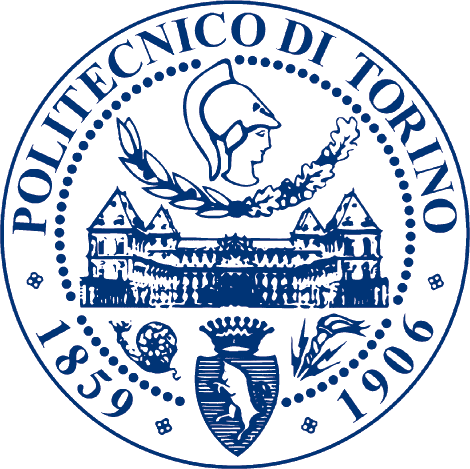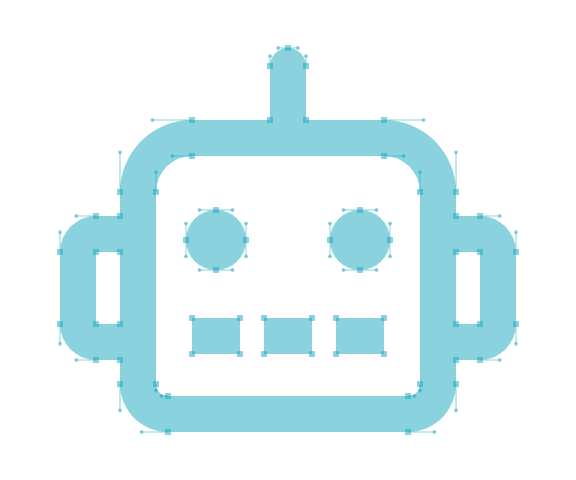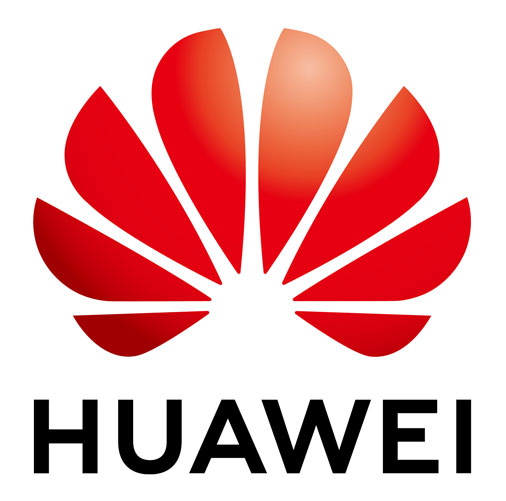Anna Monteverdi
- Università Statale di Milano
- http://www.unimi.it/
Dalla "Realtà proxy" al panico del Dasein totale. Il teatro all'epoca dell'AI e dell'Uncanny Valley
 E’ ricercatrice di Storia del Teatro all’Università Statale di Milano, docente aggregato di Storia della Scenografia, abilitata ASN seconda fascia. Esperta di Digital Performance è stata coordinatrice della Scuola di Tecnologie della Alma Artis Academy di Pisa e docente di Culture digitali, Drammaturgia multimediale, Digital video all’Accademia di Brera e Pisa; ha pubblicato: Le arti multimediali digitali (Garzanti 2005), Nuovi media nuovo teatro (2011), Rimediando il teatro con le ombre, le macchine e i new media (2013), Memoria, maschera e macchina nel teatro di Robert Lepage (2018). E' presente come relatrice e giurata in numerosi Festival di arti elettroniche (Festival della Robotica, Pomezia Light Festival, RGB light Festival, @T Festival, InVideo, Festival del Cinema Europeo). Fa parte della rete europea dei teatri EASTAP, coordinatrice della sezione Intermediality dell’IFTR International Federation of Theatre Research; ha organizzato a Belgrado la giornata su Robotica Realtà virtuali e immersive con la Scuola Sant’Anna di Pisa e Istituto Italiano di Cultura. E’ tra i docenti della Summer School di Sardegna ricerche-Parco tecnologico di Pula per la sezione EIA - Exploring Artificial Intelligence in Art (luglio 2019). Ha curato diversi dossier su Teatro e tecnologia per riviste universitarie e specializzate di Teatro (Castello di Elsinore, Hystrio); è cofondatrice del sito ateatro.it www.annamonteverdi.it
E’ ricercatrice di Storia del Teatro all’Università Statale di Milano, docente aggregato di Storia della Scenografia, abilitata ASN seconda fascia. Esperta di Digital Performance è stata coordinatrice della Scuola di Tecnologie della Alma Artis Academy di Pisa e docente di Culture digitali, Drammaturgia multimediale, Digital video all’Accademia di Brera e Pisa; ha pubblicato: Le arti multimediali digitali (Garzanti 2005), Nuovi media nuovo teatro (2011), Rimediando il teatro con le ombre, le macchine e i new media (2013), Memoria, maschera e macchina nel teatro di Robert Lepage (2018). E' presente come relatrice e giurata in numerosi Festival di arti elettroniche (Festival della Robotica, Pomezia Light Festival, RGB light Festival, @T Festival, InVideo, Festival del Cinema Europeo). Fa parte della rete europea dei teatri EASTAP, coordinatrice della sezione Intermediality dell’IFTR International Federation of Theatre Research; ha organizzato a Belgrado la giornata su Robotica Realtà virtuali e immersive con la Scuola Sant’Anna di Pisa e Istituto Italiano di Cultura. E’ tra i docenti della Summer School di Sardegna ricerche-Parco tecnologico di Pula per la sezione EIA - Exploring Artificial Intelligence in Art (luglio 2019). Ha curato diversi dossier su Teatro e tecnologia per riviste universitarie e specializzate di Teatro (Castello di Elsinore, Hystrio); è cofondatrice del sito ateatro.it www.annamonteverdi.it
 Lecturer in Hystory of Theatre (Università Statale di Milano), added professor; expert in Digital Performance and Video theatre she was didactic coordinator of the School of Technologies- Alma Artis Academy in Pisa- and teacher of Digital Cultures, Multimedia Dramaturgy, Digital video at the Academy of Brera and Pisa; she has published: Le arti multimediali digitali (Garzanti 2005), Nuovi media nuovo teatro(2011), Rimediando il teatro con le ombre, con le macchine, con i new media (2013), Memoria maschera e macchina nel teatro di R. Lepage (2018). She is jury member and speaker in several electronic arts festivals (Festival della Robotica di Pisa, Pomezia Light Festival, RGB light Festival, @T Festival, InVideo, European Film Festival, Lecce). She is membert of the European network of Theatre EASTAP and coordinator and chair for the Intermediality section of IFTR International Federation of Theater Research; she organized the conference about Robotics and Virtual and Immersive Reality in Belgrade 2018 in collaboration with Scuola Superiore Sant'Anna, Pisa and Italian Cultural Institute. She has been recently invited to give a speech for the Summer School of Sardinia research-Technology Park (section EIA - Exploring Artificial Intelligence in Art). She has edited several dossiers on theater and technology for university and specialized theater magazines (Castello di Elsinore, Hystrio, Teatro e Storia); she is co-founder of the website ateatro.it (2000) www.annamonteverdi.it
Lecturer in Hystory of Theatre (Università Statale di Milano), added professor; expert in Digital Performance and Video theatre she was didactic coordinator of the School of Technologies- Alma Artis Academy in Pisa- and teacher of Digital Cultures, Multimedia Dramaturgy, Digital video at the Academy of Brera and Pisa; she has published: Le arti multimediali digitali (Garzanti 2005), Nuovi media nuovo teatro(2011), Rimediando il teatro con le ombre, con le macchine, con i new media (2013), Memoria maschera e macchina nel teatro di R. Lepage (2018). She is jury member and speaker in several electronic arts festivals (Festival della Robotica di Pisa, Pomezia Light Festival, RGB light Festival, @T Festival, InVideo, European Film Festival, Lecce). She is membert of the European network of Theatre EASTAP and coordinator and chair for the Intermediality section of IFTR International Federation of Theater Research; she organized the conference about Robotics and Virtual and Immersive Reality in Belgrade 2018 in collaboration with Scuola Superiore Sant'Anna, Pisa and Italian Cultural Institute. She has been recently invited to give a speech for the Summer School of Sardinia research-Technology Park (section EIA - Exploring Artificial Intelligence in Art). She has edited several dossiers on theater and technology for university and specialized theater magazines (Castello di Elsinore, Hystrio, Teatro e Storia); she is co-founder of the website ateatro.it (2000) www.annamonteverdi.it
SESSIONE 2. AI e Big Data: come cambia la ricerca
Dalla "Realtà proxy" al panico del Dasein totale. Il teatro all'epoca dell'AI e dell'Uncanny Valley.
 Può il teatro raccontare le trasformazioni non sempre positive di un mondo sempre più tecnologico? Negli esempi proposti vogliamo portare la risposta di alcuni artisti alla famosa frase di Brecht sul teatro come luogo di riflessione critica e di cambiamento della società stessa. Hito Steyerl, la più influente voce dell’arte contemporanea, autrice di opere di AI art ha dedicato un libro (Duty Art free, 2018) allo smascheramento della «realtà proxy», della realtà contraffatta o per procura, dell’arte che tenta di sfuggire al «panico del Dasein totale». L’importante oggi è "esserci", presenziare a tutte le ossessive occasioni di aggregazione che internet e l’iperconnessione digitale ci propongono, gestendo il nostro corpo contemporaneamente in più luoghi tramite “proxy”, tra avatar digitali e chatbot in una “sovraesposizione dei vissuti” che ci impone la Rete. I cobots o collaborative robot, avranno un’intelligenza artificiale sempre più evoluta e lavoreranno a fianco a noi, imparando dall’esperienza e saranno anche «potenziatori» delle nostre funzioni. Ma dalla somiglianza all’essere umano alla replica, ci si ferma un attimo prima, seguendo la teoria dell’Uncanny Valley sviluppata negli anni Settanta da Masahiro Mori. Rimini Protokoll dedica al tema dell’unicità umana e di cosa potrebbe accadere alla società quando la copia prende il sopravvento sull’originale, lo spettacolo "Uncanny Valley" (2019) con una replica in scena - in forma di robot umanoide - dell’autore Thomas Melle. Marco Donnarumma nella performance “tecnotribale” Eingeweide (RomaEuropa 2018) indossa una protesi artificiale che lo porta ad assumere una forma ibrida uomo-macchina, confrontandosi con una tipologia di macchina completamente autonoma, indipendente dal controllo umano grazie alle tecnologie di A.I. e con un apparato sensomotorio non predeterminato, in grado di “improvvisare” con i corpi dei performer.
Lo sguardo della “macchina”, le fasi del riconoscimento del volto umano attraverso l’Intelligenza Artificiale (la Computer Vision) è stato proposto a teatro, in un concerto dal vivo dei Kronos Quartet dall’artista Trevor Paglen. Nel concerto, intitolato Slight Machine, l’artista-attivista tedesco ha aggiunto proiezioni che mostrano le interpretazioni dei dati biometrici degli esecutori (con una predizione sui loro stati d’animo, condizione sociale e sessuale) da parte dell’algoritmo. A teatro prendiamo, così, consapevolezza del pericolo e delle conseguenze insite in quelle che Paglen definisce le “immagini invisibili”, cioè immagini generate dalle macchine ad uso delle macchine stesse. Lo spettacolo musicale racconta cosa pensa di noi l'Intelligenza Artificiale.
Può il teatro raccontare le trasformazioni non sempre positive di un mondo sempre più tecnologico? Negli esempi proposti vogliamo portare la risposta di alcuni artisti alla famosa frase di Brecht sul teatro come luogo di riflessione critica e di cambiamento della società stessa. Hito Steyerl, la più influente voce dell’arte contemporanea, autrice di opere di AI art ha dedicato un libro (Duty Art free, 2018) allo smascheramento della «realtà proxy», della realtà contraffatta o per procura, dell’arte che tenta di sfuggire al «panico del Dasein totale». L’importante oggi è "esserci", presenziare a tutte le ossessive occasioni di aggregazione che internet e l’iperconnessione digitale ci propongono, gestendo il nostro corpo contemporaneamente in più luoghi tramite “proxy”, tra avatar digitali e chatbot in una “sovraesposizione dei vissuti” che ci impone la Rete. I cobots o collaborative robot, avranno un’intelligenza artificiale sempre più evoluta e lavoreranno a fianco a noi, imparando dall’esperienza e saranno anche «potenziatori» delle nostre funzioni. Ma dalla somiglianza all’essere umano alla replica, ci si ferma un attimo prima, seguendo la teoria dell’Uncanny Valley sviluppata negli anni Settanta da Masahiro Mori. Rimini Protokoll dedica al tema dell’unicità umana e di cosa potrebbe accadere alla società quando la copia prende il sopravvento sull’originale, lo spettacolo "Uncanny Valley" (2019) con una replica in scena - in forma di robot umanoide - dell’autore Thomas Melle. Marco Donnarumma nella performance “tecnotribale” Eingeweide (RomaEuropa 2018) indossa una protesi artificiale che lo porta ad assumere una forma ibrida uomo-macchina, confrontandosi con una tipologia di macchina completamente autonoma, indipendente dal controllo umano grazie alle tecnologie di A.I. e con un apparato sensomotorio non predeterminato, in grado di “improvvisare” con i corpi dei performer.
Lo sguardo della “macchina”, le fasi del riconoscimento del volto umano attraverso l’Intelligenza Artificiale (la Computer Vision) è stato proposto a teatro, in un concerto dal vivo dei Kronos Quartet dall’artista Trevor Paglen. Nel concerto, intitolato Slight Machine, l’artista-attivista tedesco ha aggiunto proiezioni che mostrano le interpretazioni dei dati biometrici degli esecutori (con una predizione sui loro stati d’animo, condizione sociale e sessuale) da parte dell’algoritmo. A teatro prendiamo, così, consapevolezza del pericolo e delle conseguenze insite in quelle che Paglen definisce le “immagini invisibili”, cioè immagini generate dalle macchine ad uso delle macchine stesse. Lo spettacolo musicale racconta cosa pensa di noi l'Intelligenza Artificiale.
From "Proxy Reality" to the "terror of total Dasein". The theater at the age of AI and Uncanny Valley.
 Can theater tell the not always positive transformations of the technological world? In the selected examples the artists ask us to reexamine the human relationship to technology: it is their adherence to the Brecht's idea of theater as a place for critical reflection and as a mean of transforming society itself. Hito Steyerl, the most influential voice of contemporary art (especially AI art) has dedicated a whole book (Duty Art free, 2018) to the topics of the "proxy reality", of the art that attempts to escape the terror of "total Dasein panic". The important thing today is "to be present", to attend all the obsessive occasions of aggregation that Internet and the digital hyper-connection propose to us, managing our body simultaneously in more places through digital avatars and chatbots. The cobots or collaborative robots, will have an increasingly advanced artificial intelligence learning from experience. But from the resemblance to the human being to the total replication of our body, we stop a moment before, following the theory of the Uncanny Valley which has been developed in the Seventies by Masahiro Mori. Rimini Protokoll dedicates to the topics of human uniqueness and what could happen to the society when the copy takes precedence over the original, in the show "Uncanny Valley" (2019) with a humanoid robot on stage -. Marco Donnarumma in the "technotribal" performance Eingeweide (RomaEuropa 2018) wears an artificial prosthesis that leads him to take on a hybrid man-machine form, confronting himself with a type of machine that is completely autonomous thanks to A.I. and with a non-predetermined sensomotor apparatus.
The recognition of the human face through Artificial Intelligence and Computer Vision was proposed onstage in a live concert by Kronos Quartet in collaboration with the A.I. artist Trevor Paglen (named "the Snowden of art" for his critical voice towards surveillance technologies). In Slight Machine the German artist-activist added projections showing the interpretations by AI system of the biometric data of the performers (with a prediction about their moods, and social and sexual condition). In this way we take an awareness of the danger inherent in what Paglen defines "invisible images", that is to say those images generated by machines and used by machines only. The Musical Performance “Sight Machine” Reveals What Artificial Intelligence is thinking about us.
Can theater tell the not always positive transformations of the technological world? In the selected examples the artists ask us to reexamine the human relationship to technology: it is their adherence to the Brecht's idea of theater as a place for critical reflection and as a mean of transforming society itself. Hito Steyerl, the most influential voice of contemporary art (especially AI art) has dedicated a whole book (Duty Art free, 2018) to the topics of the "proxy reality", of the art that attempts to escape the terror of "total Dasein panic". The important thing today is "to be present", to attend all the obsessive occasions of aggregation that Internet and the digital hyper-connection propose to us, managing our body simultaneously in more places through digital avatars and chatbots. The cobots or collaborative robots, will have an increasingly advanced artificial intelligence learning from experience. But from the resemblance to the human being to the total replication of our body, we stop a moment before, following the theory of the Uncanny Valley which has been developed in the Seventies by Masahiro Mori. Rimini Protokoll dedicates to the topics of human uniqueness and what could happen to the society when the copy takes precedence over the original, in the show "Uncanny Valley" (2019) with a humanoid robot on stage -. Marco Donnarumma in the "technotribal" performance Eingeweide (RomaEuropa 2018) wears an artificial prosthesis that leads him to take on a hybrid man-machine form, confronting himself with a type of machine that is completely autonomous thanks to A.I. and with a non-predetermined sensomotor apparatus.
The recognition of the human face through Artificial Intelligence and Computer Vision was proposed onstage in a live concert by Kronos Quartet in collaboration with the A.I. artist Trevor Paglen (named "the Snowden of art" for his critical voice towards surveillance technologies). In Slight Machine the German artist-activist added projections showing the interpretations by AI system of the biometric data of the performers (with a prediction about their moods, and social and sexual condition). In this way we take an awareness of the danger inherent in what Paglen defines "invisible images", that is to say those images generated by machines and used by machines only. The Musical Performance “Sight Machine” Reveals What Artificial Intelligence is thinking about us.












